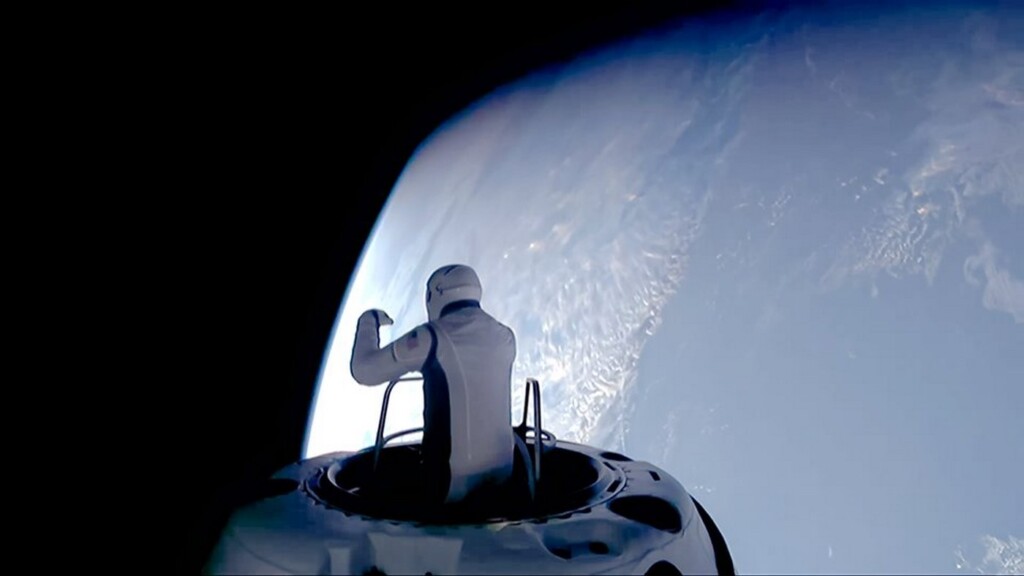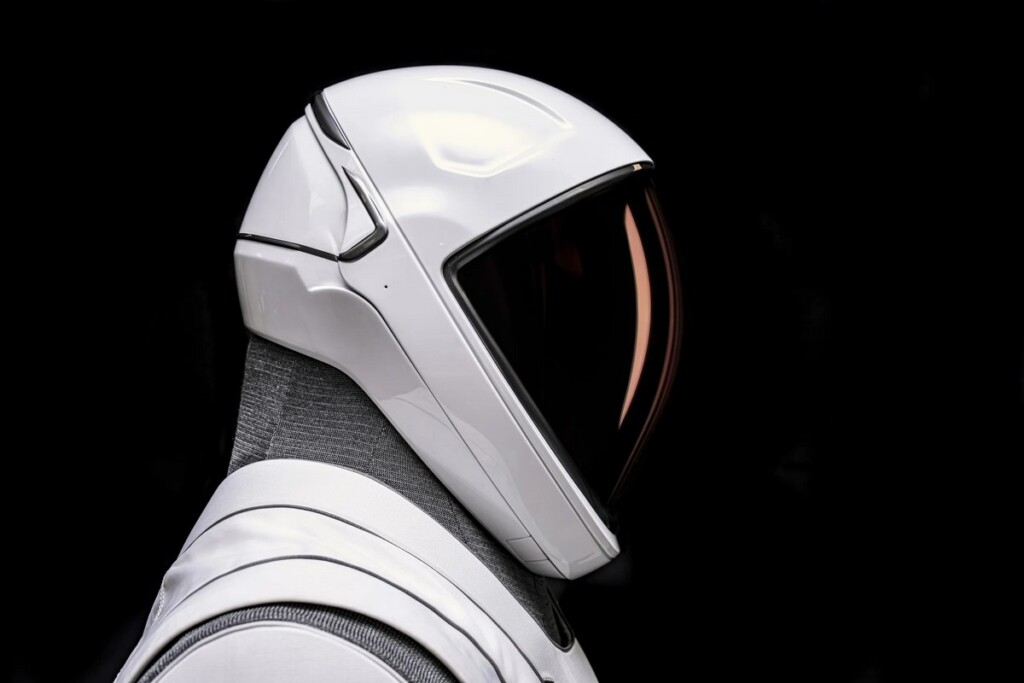 Mission Commander Isaacman exiting the Dragon capsule – credit, Polaris Program, retrieved from X
Mission Commander Isaacman exiting the Dragon capsule – credit, Polaris Program, retrieved from XReprinted with permission from World At Large, a news website of nature, politics, science, health, and travel.
Early Thursday morning at 7:58 a.m. ET, members of the SpaceX Polaris Dawn crew successfully completed the world’s first all-civilian spacewalk 450 miles above Earth’s surface.
Tech entrepreneur and adventurer Jared Isaacman was followed by Sarah Gillis, a SpaceX engineer, in exiting the hatch of the Dragon capsule while it floated over Australia and New Zealand.
There have been several days of incredible scenes and celebrations to mark this momentous occasion—including their safe return on Sunday—but one very important detail hasn’t gotten the spotlight it deserves.
“The images of Isaacman and Gillis silhouetted more than 200 miles high against a dramatic backdrop of Earth will be added to the annals of space history at a time when companies such as SpaceX are authoring new chapters of exploration,” writes Christian Davenport at the Washington Post, who explored that detail in his write-up on the milestone.
The Polaris Dawn mission tested the most recent iteration of the spacesuit. With the success of Isaacman and Gillis’ spacewalks came the success of the SpaceX new extravehicular activity (EVA) suit, which is incomparably more mobile than what the Apollo Program astronauts wore, allowing the Polaris crew to maneuver inside the Dragon capsule and exit into the hatch into space without any airlock chamber.
In an interview with the Post, powered by Starlink high-speed wireless internet, Isaacman said the suit performed well and that their “pretty good data” will inform the design innovation of a further two suits.
 The SpaceX EVA Suit – credit Polaris Program, released.
The SpaceX EVA Suit – credit Polaris Program, released.NASA’s Extravehicular Mobility Unit (EMU) has been worn by ISS astronauts since 1981 but weighs over 100 pounds without life support systems, and comes in only a few different sizes, meaning astronauts have to select which size of glove, for example, is the closest approximation to their hand size.
It includes several rigid components like the upper torso and rear-entry hatch. By contrast, the Polaris suits are designed to be almost entirely soft, with thermal insulation and radiation-proof textile designs salvaged from the spacecraft itself. The design keeps in mind that a multi-planet species will need millions of EVA suits, and reflects this need by being easier to manufacture, less expansive, and more customizable.
“We have a lot of different resources at our disposal here,” Chris Trigg, SpaceX spacesuit manager said during a talk in 2022. “There’s some thermal material that we ended up using on the boot, which was developed actually for Falcon and Dragon, and is used on the interstage on Falcon, and on the trunk of Dragon.”
ALSO CHECK OUT: SpaceX Launches Historic Flight for NASA, Shuttling Astronauts via First Class to International Space Station
Trigg also described a new heads-up display inside the helmet, allowing astronauts to view data about their suits’ internal temperature, humidity, and pressure; the display also exhibits a mission clock to monitor the durations of particular EVA tasks.
SpaceX’s (and partners) Polaris Program is a little like rolling out the welcome mat to all of humanity for the inauguration of commercial space travel and heavy industry. The Polaris Dawn mission was designed to test a variety of things, including the EVA suit. The second mission will try to visit the Hubble Space Telescope, which Isaacman suggested could be given a push by him and his crew.
RECENT SPACE MILESTONES: First Human to Spend 1,000 Days in Outer Space Offers Unprecedented Opportunity to Study ‘Rocket’ Man Effects
Over the years, Hubble, which is still working well, has been pulled towards Earth by gravity, and it won’t be very long before it burns out in the atmosphere.
A third Polaris mission will be aiming to test Starship—SpaceX’s massive, next-generation rocket and spacecraft that SpaceX founder Elon Musk says will take humanity to Mars and back.
WATCH the entire spacewalk below from FARZAD…
SHARE This Milestone For Humanity With Your Friends…
Source link

